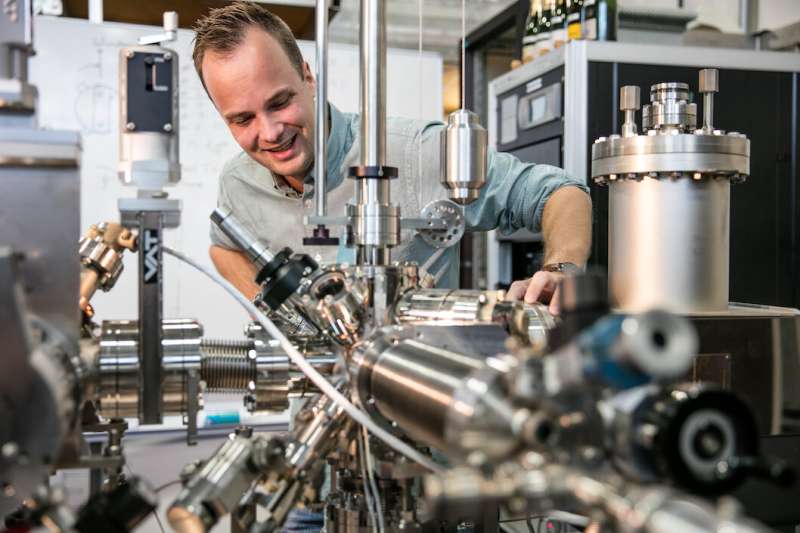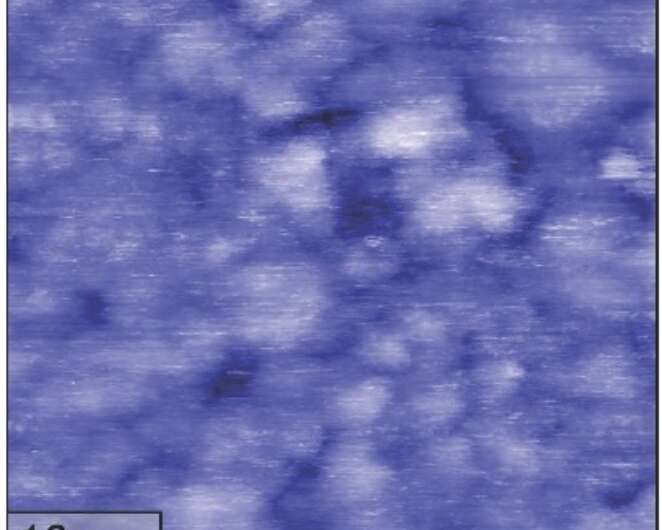'Raindrops on the roof-technique' reveals new quantum liquid

Koen Bastiaans and his colleagues have discovered a new quantum liquid unlike anything ever seen. They did it by using a technique that can be compared to listening to the sound of raindrops falling on a roof.
Perhaps you still remember those old-fashioned light bulbs; they gave a cozy glow, they got hot, and nowadays they would greatly increase your electricity bill. Why? They were made out of a material with a large electrical resistance. All materials have a certain resistance to conducting electricity.
All materials? Yes, except for a special class of materials called superconductors. These transport electricity without any resistance when they are cooled below certain (extremely low) temperatures. How they work is one of the enduring mysteries of physics.
Textbook theory
There is a theory that explains why some materials become superconducting: Once cooled below their transition temperature, the electrons in the material pair up to form Cooper pairs. Then, these Cooper pairs condense into a quantum liquid that flows effortlessly, without resistance, resulting in superconductivity.
Up until now, physicists have thought that the formation of Cooper pairs and the condensation into the resistance-free state is a joint process that happens simultaneously. "That's what we all learned in textbooks," says physicist Koen Bastiaans, lead author of the study.
Mysterious quantum liquid
Here comes the big surprise: Bastiaans and colleagues have discovered that Cooper pairs could still exist above the superconducting transition temperature, forming a new mysterious quantum liquid state. "This means that the formation of Cooper pairs is not the same process as the condensing itself," says Bastiaans. "For me, this completely changed how I think about superconductivity."
Research started out in close collaboration with Delft University of Technology and the space research institute SRON, focusing on the superconductor TiN (titanium nitride), which is also used in very sensitive optical detectors for space research.
Raindrops falling on the roof
For detecting the Cooper pairs, the Leiden group is pioneering a technique that allows them to "listen" to the electrons in the superconductors. When these are single electrons, the noise profile is different compared to when the electrons form Cooper pairs. "It's a bit like listening to raindrops falling on the roof," Bastiaans explains in an earlier video. "When the drops grow fatter, the sound of the rain changes."
The researchers measured the noise in superconducting TiN, which clearly showed that at low temperature the material was made out of Cooper pairs.

'The best is yet to come'
When they raised the temperature past 2.95 Kelvin (2.95 degrees above -273 degrees Celsius), the superconductivity vanished, as expected. But the Cooper pairs stay around until the temperature reaches about 7.2 Kelvin. "So you can have Cooper pairs without condensation and superconductivity," says Bastiaans. "There had been hints that this was possible, but never incontrovertible proof. It means we actually found new kind of quantum liquid: A state of matter that is resistive, but completely composed of Cooper pairs."
The discovery, published in the journal Science, provides new insights for physicists seeking to understand superconductivity. It shows that forming Cooper pairs and condensing are not necessarily one and the same process.
"It's funny," says Bastiaans, who is now a postdoc at Delft University of Technology, "the most significant measurements were started on the evening before my Ph.D. defense in Leiden. During that defense, my thesis advisor said, 'the best is yet to come.' He certainly was right about that."
More information: Koen Bastiaans et al, Direct evidence for Cooper pairing without a spectral gap in a disordered superconductor above Tc, Science (2021). DOI: 10.1126/science.abe3987
Journal information: Science
Provided by Leiden Institute of Physics





















